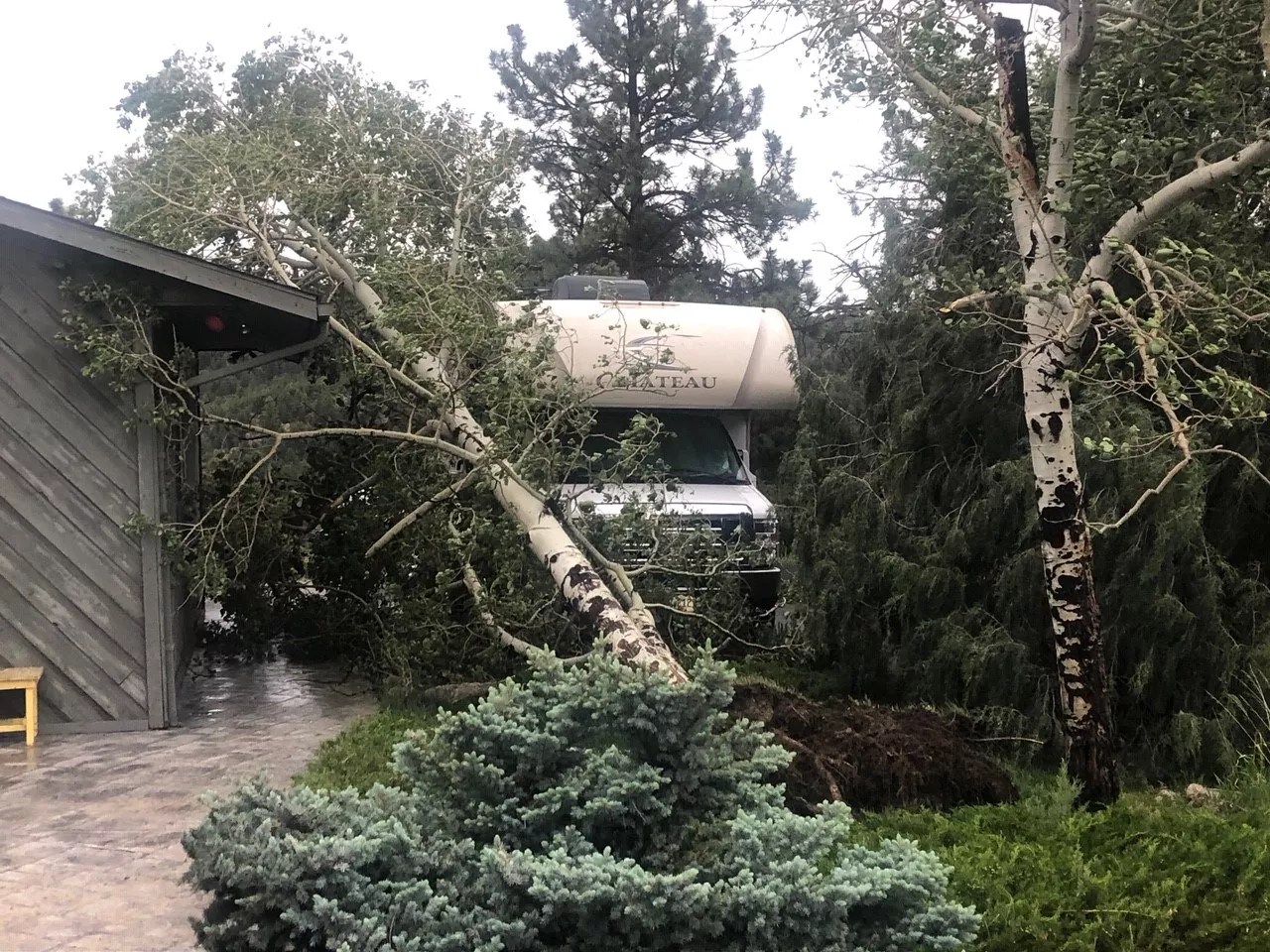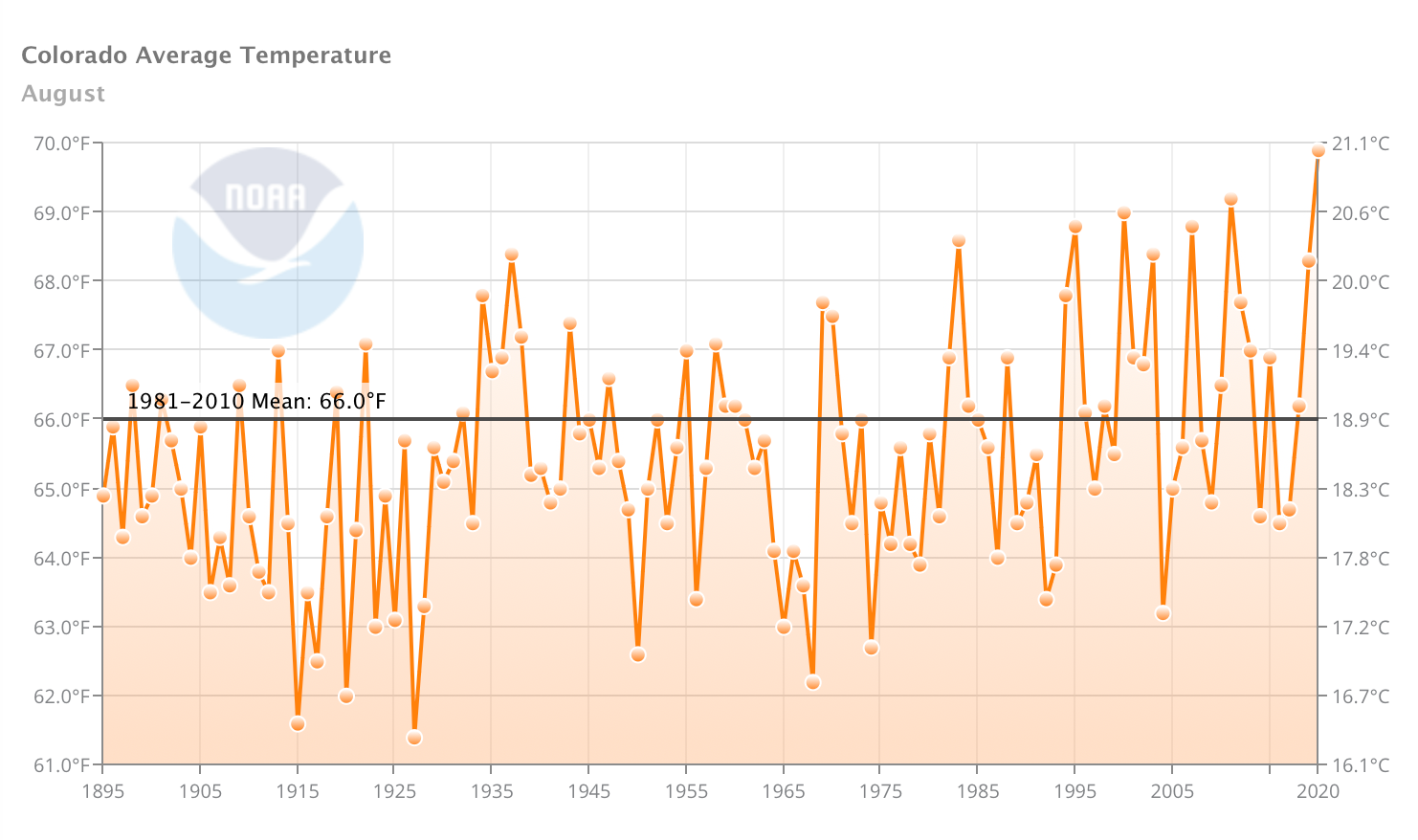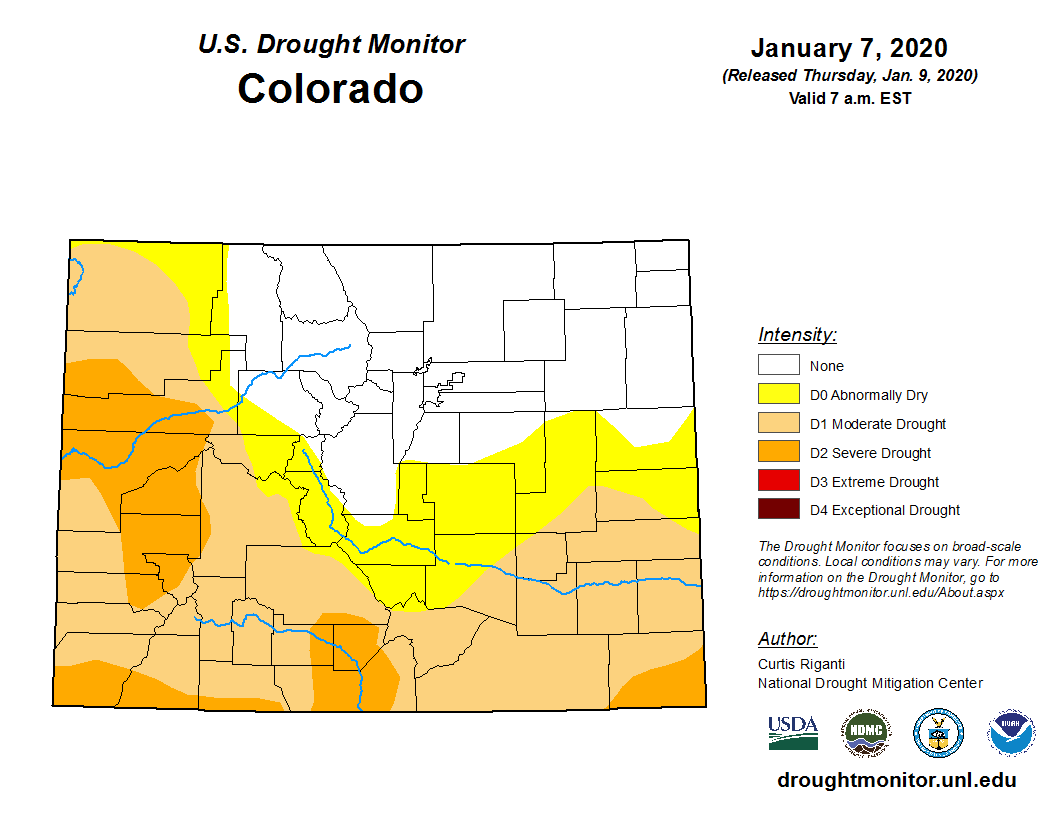
Boulder Office of Emergency Management

Audio By Carbonatix
There’s no doubt that 2020 was a turbulent year – and if you’ve ever flown into Denver International Airport on a windy winter day, you know what turbulence feels like. That’s because no matter what else is going on in Colorado, you can count on not being able to count on the weather. But while the weather is always changing, there was one constant over the past year.
You’ll find some dry – very dry – statistics in the top ten weather events around the state in 2020.
Boulder’s Snowiest Season
Precipitation headlines were hard to come by in drought-ridden 2020, but Boulder made them this spring. Although the town normally averages 88.3 inches of snow a year, but on April 17, it picked up almost seventeen inches of snow in a day, bringing its seasonal total to an astounding 152 inches! That’s more than five feet above what Boulder expects seasonally, and enough to beat the old record set back in 1909.

An Evergreen home hit by the derecho.
Andy Stein
The Rare Colorado Derecho
A derecho is a line of strong storms with damaging winds that holds its intensity for a very long time. You’ll typically find derechos in the Midwest and eastern U.S., which makes what hit Colorado on June 6 a rare occurrence: This was the first derecho to impact Colorado in modern records. There were 91 reports of damaging winds in a single day, smashing the old record of thirty back in May 2006. The highest wind report came from Winter Park, which measured 110 mph.
The Yuma Heat Burst
Colorado is known for its temperature swings, but the one in early July in Yuma was a record-breaker. A collapsing (or weakening) thunderstorm sent down a plume of air in what’s known in meteorology as adiabatic warming. The temperature in Yuma at 2 a.m. was 68 degrees. By 4 a.m., the temperature had risen to 88 degrees. And just two hours later, the temperature was back to 64 degrees.
Record Evaporation Rates on the Eastern Plains
Evaporation is part of summer; it can happen when it’s windy, when it’s warm and when there is a lack of humidity – but what happened this summer was extreme. The state was already in a drought; add very hot temperatures and very windy conditions coupled with the lack of rain, and any moisture in the ground was very quickly stripped away. This is one of the reasons the drought in Colorado got so bad so quickly.

NOAA
Record Hot August
Heat in the middle of summer is not surprising, but record heat is still worth noting. Statewide, August was the hottest month on record in Colorado, coming in 4 degrees on average warmer than the usual temperatures. Close to 100 daily heat records were broken across the state.
Fire and Ice Within 48 Hours
Over Labor Day Weekend, portions of Colorado, including Denver, saw temperatures approach and eclipse 100 degrees. Within 48 hours of the triple-digit heat readings, several inches of snow covered the ground. The short span between the heat and accumulating snow set national records. There are only three weather stations in the country that have seen this type of weather change in this amount of time – two in Colorado and one in South Dakota.
Rare September Snow
Snow in September? The snow that followed that heatwave was something the Front Range hasn’t seen since 2000. The snow downed trees full of leaves in Denver, and a foot and a half of snow fell in the high country, ranking this storm as one of the snowiest in September in the mountains, as well.

NWS
Statewide Drought
Colorado is no stranger to drought conditions, but for drought to cover the entire state at such intense levels is not normal – and the drought of 2020 is definitely lasting into 2021. A combination of early snowmelt, a dry spring and summer, no monsoon moisture, windy conditions and a dry fall led to 100 percent of Colorado experiencing moderate drought, 75 percent of the state in extreme drought and 25 percent of the state experiencing exceptional drought, or D4, the more severe level.
Top Ranking Dry, Warm Year
When you look through the weather headlines for 2020, drought and heat stand out – so it’s not surprising that 2020 ranks as the state’s third-driest ever. It was also one of the hottest years ever. During multiple months, Colorado saw heat that landed it in the top ten for highest monthly temperatures. When it was all over, 2020 ranked as Colorado’s seventh-warmest year on record.
Raging, Massive Wildfires
Just as Colorado is accustomed to drought and temperature swings, it’s used to fires – but the fires that blazed in 2020 were on a different level. The Hayman fire that burned in 2002 had been the state’s largest wildfire, charring 130,000 acres. Not one, not two, but three wildfires this past year eclipsed the acreage burned during the Hayman fire. The Pine Gulch fire burned 139,000 acres. The East Troublesome fire burned 193,000 acres, and is the only fire known to jump over the Continental Divide. And then the Cameron Peak fire blazed through 203,000 acres, making a record that we hope will never be broken again.